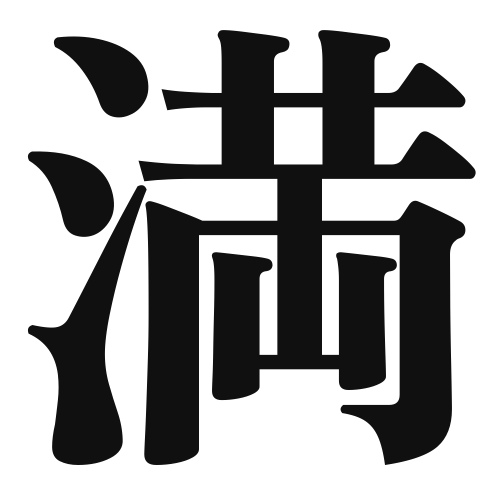1. Overview of Meaning
The kanji “満” (man) means “full” or “satisfied.” It conveys a sense of completeness or abundance, often used to describe a state where something is filled to capacity.
2. Formation and Radical
Formation of the Kanji: The kanji “満” is a compound character (会意文字) that combines elements to convey its meaning. It consists of the radical for “water” (氵) on the left, indicating a connection to fullness, and the character “満” itself, which suggests the idea of being filled.
Radical: The radical of “満” is 氵, which is related to water and often signifies fluidity or abundance.
3. Examples of Usage
Common Words and Phrases: Some frequently used words that include “満” are:
- 満足 (manzoku) – satisfaction
- 満員 (man’in) – full capacity (as in a crowded place)
- 満月 (mangetsu) – full moon
Example Sentences in Daily Conversation:
- このレストランは満員です。 (Kono resutoran wa man’in desu.) – This restaurant is full.
- 彼は仕事に満足しています。 (Kare wa shigoto ni manzoku shiteimasu.) – He is satisfied with his job.
4. Synonyms and Antonyms
Similar Kanji: A similar kanji is “充” (juu), which means “to fill” or “to charge.” While both convey a sense of fullness, “充” often implies filling something up to a functional level, whereas “満” emphasizes a state of being completely full.
Antonyms: An antonym of “満” is “空” (kuu), which means “empty.” This represents the opposite state of fullness.
5. Cultural and Historical Background
Connection to Japanese Culture: The concept of “満” is significant in Japanese culture, often associated with feelings of contentment and harmony. It reflects the importance of balance and fulfillment in life.
Proverbs and Idioms: One common saying is “満ち足りる” (michitariru), which means “to be content” or “to be satisfied.” This phrase emphasizes the value of appreciating what one has.
